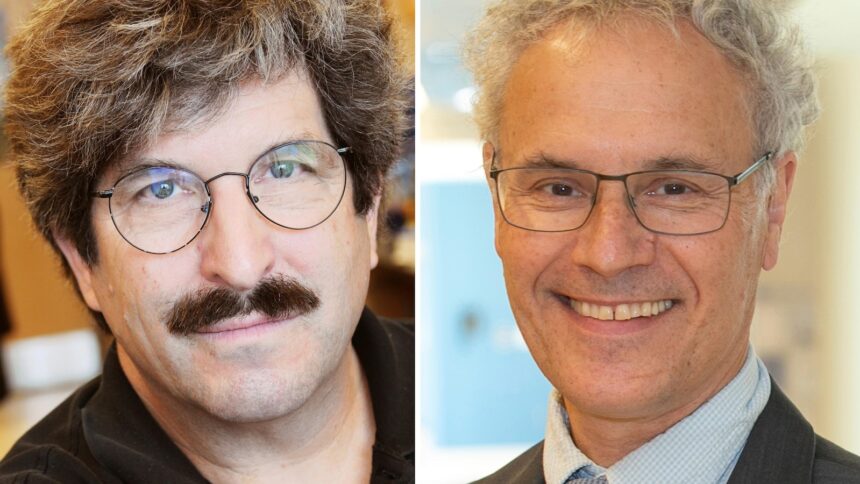STOCKHOLM — The Nobel Prize in physiology or medicine was awarded Monday to the Americans Victor Ambros and Gary Ruvkun for the discovery of microRNA, small pieces of genetic material that change the way genes work at the cellular level and can lead to new ways to treat cancer.
The Nobel Assembly at the Karolinska Institute, which awarded the prize, said the duo’s discovery “proved an important basis for how organisms develop and function.”
“These groundbreaking discoveries reveal new principles of gene regulation that are important for multicellular organisms, including humans,” the council said in a statement explaining the importance of their work.
Ambros conducted the research that led to the prize at Harvard University. He is currently a professor of natural sciences at the University of Massachusetts Medical School. Ruvkun’s research was conducted at Massachusetts General Hospital and Harvard Medical School, where he was a professor of genetics, said Thomas Perlmann, Secretary General of the Nobel Committee.
Perlmann said he spoke with Ruvkun by phone shortly before the announcement.
“It took a long time before he came to the phone and sounded very tired, but he was very quickly excited and happy, when he realized what it was,” said Perlmann.
Ambros and Ruvkun, the assembly explained, were initially interested in genes that control different genetic development times, to ensure that cell types develop at the right time.
To do that, they studied two mutant strains of worms commonly used as research models in science. The two scientists decided to identify the responsible mutated gene in the worm and what its role was. The mechanism that was finally identified – gene regulation by microRNA – allowed organisms to evolve for hundreds of millions of years.
The Nobel committee said that Ambros and Ruvkun’s discovery ultimately “reveals a new dimension to gene regulation, which is essential for all complex life forms.”
MicroRNA has opened up scientists’ approach to treating diseases like cancer by helping to regulate how genes work at the cellular level, according to Dr. Claire Fletcher, lecturer in molecular oncology at Imperial College London.
Fletcher said microRNAs provide genetic instructions to tell cells to make new proteins and there are two main areas where microRNAs can help: developing drugs to treat diseases and acting as biomarkers.
“MicroRNAs change the way genes work in cells,” said Fletcher, whose outside expertise is unrelated to the Nobel prize.
“If we take a sample of cancer, we will have certain genes working overtime, possibly mutating and working in overdrive,” he said. “We can take microRNAs that we know can modify the activity of these genes and we can deliver specific microRNAs to cancer cells to prevent the mutated genes from having these effects.”
Last year, the Nobel Prize in Physiology or Medicine went to the Hungarian-American Katalin Karikó and the American Drew Weissman for the discovery that made it possible to create an mRNA vaccine against COVID-19 that is critical for reducing the pandemic.
The prize carries a cash award of 11 million Swedish kronor ($1 million) from the legacy left by the prize’s creator, Swedish inventor Alfred Nobel.
The announcement launched this year’s Nobel prize season.
The Nobel announcement is followed by the physics prizes on Tuesday, chemistry on Wednesday and literature on Thursday. The Nobel Peace Prize will be announced on Friday and the Nobel Prize in Economic Sciences on October 14.
The winners were invited to receive the award at a ceremony on December 10, the anniversary of Nobel’s death.
Fletcher said there are clinical trials underway to see how the microRNA approach can help treat skin cancer, but no drug treatment has yet been approved by drug regulators. He expects that to happen in the next five to 10 years.
He says that microRNA is another way to control the behavior of genes to treat and track various diseases.
“The majority of the therapies we have today are targeting proteins in cells,” he said. “If we can intervene at the microRNA level, this opens up new ways to develop drugs and control the activity of genes whose levels can be altered in disease.”
___
Corder reported from The Hague, Netherlands, Cheng reported from London.




